More than 30 elements are used to build a single smartphone. With 1.35 billion units shipped in 2021, and 1.53 billion units expected to ship in 2025 the demand for digital technologies will require minerals and precious metals from the ground to support increasing demand.1
Additionally, many of the metals and minerals used in smartphones are also critical to supporting the green energy transition. From electric car batteries to wind and solar, the mining of critical metals and minerals is critical to 21st century technologies.

A smartphone screen is made up of a combination of materials including indium tin oxide for the transparent film, aluminosilicate (mixture of alumina and silicate) in the glass, and a variety of Rare Earth element compounds.
Click each element to find out more.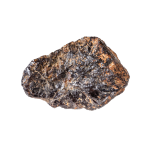
Tin Discovered 2100 BC
- Smartphone part(s)
- Screen
- Amount in smartphone
- 0.66g
- Projected Demand Increase (by 2030)
- 30%
- Found Primarily
- 1. China, 2. Indonesia, 3. Burma
- Identified as a Clean Energy Metal?
- No
- Fun Fact
- Historians think that as early as 1500 B.C., Phoenicians traveled by sea to the Cornwall district of England to obtain tin. In more modern times, the London Metal Exchange (LME) was launched in 1877 on the back of copper, pig iron, and tin trading.
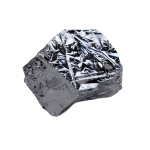
Silicon Discovered 1824
- Smartphone part(s)
- Chip and Screen Glass
- Amount in smartphone
- 8.14g
- Projected Demand Increase (by 2030)
- 29%
- Found Primarily
- N/A
- Identified as a Clean Energy Metal?
- Yes
- Fun Fact
- Silicon is the second most abundant element on Earth, after oxygen.

Molybdenum Discovered 1781
- Smartphone part(s)
- Screen
- Amount in smartphone
- 0.02g
- Projected Demand Increase (by 2030)
- 13%
- Found Primarily
- 1. China, 2. United States, 3. Peru
- Identified as a Clean Energy Metal?
- Yes
- Fun Fact
- Molybdenum has the third highest melting point of metal and is used to improve the strength of steel. It's used in missiles, aircraft, and nuclear energy.
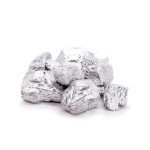
Indium Discovered 1863
- Smartphone part(s)
- Screen
- Amount in smartphone
- Not Available
- Projected Demand Increase (by 2030)
- 7.6% CAGR to 2030 (80% cumulative)
- Found Primarily
- 1. China, 2. Korea, 3. Canada & Japan
- Identified as a Clean Energy Metal?
- Yes
- Fun Fact
- Indium tin oxide is one of the most widely used transparent conducting oxides because of its electrical conductivity and optical transparency. Touchscreens wouldn't exist without it.
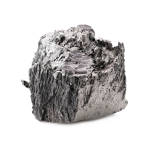
Terbium Discovered 1843
- Smartphone part(s)
- Vibration unit, Liquid crystal display
- Amount in smartphone
- Not Available
- Projected Demand Increase (by 2030)
- 195%-434% depending on stated policy or sustainable development goals
- Found Primarily
- 1. China, 2. Vietnam, 3. Brazil & Russia
- Identified as a Clean Energy Metal?
- Yes – for battery and wind
- Fun Fact
- Rare earth metals are a key component of the green energy transition helping to support magnets, wind turbines, and electric vehicles.
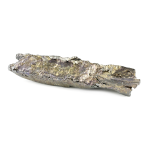
Praseodymium Discovered 1885
- Smartphone part(s)
- Speaker & Microphone, Liquid crystal display
- Amount in smartphone
- Not Available
- Projected Demand Increase (by 2030)
- 195%-434% depending on stated policy or sustainable development goals
- Found Primarily
- 1. China, 2. Vietnam, 3. Brazil & Russia
- Identified as a Clean Energy Metal?
- Yes – for battery and wind
- Fun Fact
- Rare earth metals are a key component of the green energy transition helping to support magnets, wind turbines, and electric vehicles.

Europium Discovered 1901
- Smartphone part(s)
- Battery, Liquid crystal display
- Amount in smartphone
- Not Available
- Projected Demand Increase (by 2030)
- 195%-434% depending on stated policy or sustainable development goals
- Found Primarily
- 1. China, 2. Vietnam, 3. Brazil & Russia
- Identified as a Clean Energy Metal?
- Yes – for battery and wind
- Fun Fact
- Rare earth metals are a key component of the green energy transition helping to support magnets, wind turbines, and electric vehicles.
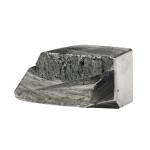
Dysprosium Discovered 1886
- Smartphone part(s)
- Vibration unit, Liquid crystal display
- Amount in smartphone
- Not Available
- Projected Demand Increase (by 2030)
- 195%-434% depending on stated policy or sustainable development goals
- Found Primarily
- 1. China, 2. Vietnam, 3. Brazil & Russia
- Identified as a Clean Energy Metal?
- Yes – for battery and wind
- Fun Fact
- Rare earth metals are a key component of the green energy transition helping to support magnets, wind turbines, and electric vehicles.

Gadolinium Discovered 1880
- Smartphone part(s)
- Speaker & Microphone, Liquid crystal display
- Amount in smartphone
- Not Available
- Projected Demand Increase (by 2030)
- 195%-434% depending on stated policy or sustainable development goals
- Found Primarily
- 1. China, 2. Vietnam, 3. Brazil & Russia
- Identified as a Clean Energy Metal?
- Yes – for battery and wind
- Fun Fact
- Rare earth metals are a key component of the green energy transition helping to support magnets, wind turbines, and electric vehicles.
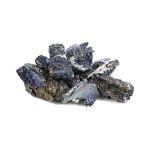
Lanthanum Discovered 1839
- Smartphone part(s)
- Liquid crystal display
- Amount in smartphone
- Not Available
- Projected Demand Increase (by 2030)
- 195%-434% depending on stated policy or sustainable development goals
- Found Primarily
- 1. China, 2. Vietnam, 3. Brazil & Russia
- Identified as a Clean Energy Metal?
- Yes – for battery and wind
- Fun Fact
- Rare earth metals are a key component of the green energy transition helping to support magnets, wind turbines, and electric vehicles.
A smartphone’s casing needs to be resistant to potential shock damage (such as a dropping your phone) and waterproof (increasing feature of newer smartphone models). This makes metals like aluminium, nickel, and magnesium the ideal materials for smartphone casing.
Click each element to find out more.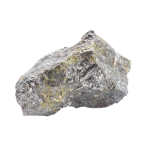
Nickel Discovered 1715
- Smartphone part(s)
- Microphone, Battery, Casing, Electrical Connections
- Amount in smartphone
- 2.72g
- Projected Demand Increase (by 2030)
- 31%
- Found Primarily
- 1. Australia & Indonesia, 2. Brazil, 3. Russia
- Identified as a Clean Energy Metal?
- Yes
- Fun Fact
- Nickel supplies four critical demand sources: stainless steel, electroplating, superalloys and now batteries. Stainless steel has grown at 2x GDP since 1950 alone.

Magnesium Discovered 1755
- Smartphone part(s)
- Casing
- Amount in smartphone
- 0.65g
- Projected Demand Increase (by 2030)
- 5.3% CAGR to 2030 (51% cumulative)
- Found Primarily
- 1. Russia, 2. China, 3. Slovakia
- Identified as a Clean Energy Metal?
- No
- Fun Fact
- Magnesium remains critical to Aluminum production, a market 72,000x its size.
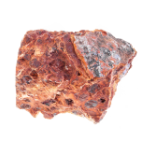
Aluminum Discovered 1825
- Smartphone part(s)
- Case
- Amount in smartphone
- 31.14g
- Projected Demand Increase (by 2030)
- 17.70%
- Found Primarily
- 1. China, 2. India, 3. Russia
- Identified as a Clean Energy Metal?
- Yes – for electricity networks only
- Fun Fact
- Aluminum has many uses and fills markets where steel is too heavy or copper is too expensive.
A modern smartphone is a marvel of miniscule electronic parts from gold and tantalum for microelectrical components and microcapacitors, through to Gallium for semiconductors, Copper for wiring, and Zinc for circuit boards. These commodities are selected for their electrical resistance amongst other properties that make them ideal for microelectrical components.
Click each element to find out more.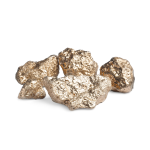
Gold Discovered 6000 BC
- Smartphone part(s)
- Microelectrical components
- Amount in smartphone
- 0.014g
- Projected Demand Increase (by 2030)
- 9.40%
- Found Primarily
- 1. Australia, 2. Russia, 3. South Africa
- Identified as a Clean Energy Metal?
- No
- Fun Fact
- It is estimated that 6.5bn ounces of gold have been produced since antiquity. Each ounce would find a buyer at $1800/oz.
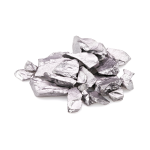
Tantalum Discovered 1802
- Smartphone part(s)
- Micro-capacitors (filtering & frequency tuning)
- Amount in smartphone
- 0.02g
- Projected Demand Increase (by 2030)
- 30%
- Found Primarily
- 1. Australia, 2. Brazil, 3. N/A
- Identified as a Clean Energy Metal?
- No
- Fun Fact
- Tantalum is critical to turbines (enabling power and flight), along with airbag performance (when needed) in every vehicle.
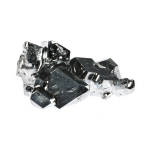
Gallium Discovered 1875
- Smartphone part(s)
- Semiconductors
- Amount in smartphone
- 0.01g
- Projected Demand Increase (by 2030)
- 24.5% CAGR to 2030 (577% cumulative)
- Found Primarily
- 1. United States, 2. Russia, 3. China
- Identified as a Clean Energy Metal?
- No
- Fun Fact
- Gallium enjoys wide applications in aerospace, defense applications, high-performance computers, industrial equipment, and telecommunications.

Silicon Discovered 1824
- Smartphone part(s)
- Chip and Screen Glass
- Amount in smartphone
- 8.14g
- Projected Demand Increase (by 2030)
- 29%
- Found Primarily
- N/A
- Identified as a Clean Energy Metal?
- Yes
- Fun Fact
- Silicon is the second most abundant element on Earth, after oxygen.
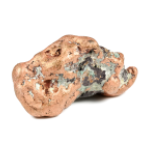
Copper Discovered Prehistoric
- Smartphone part(s)
- Wiring
- Amount in smartphone
- 7.8g
- Projected Demand Increase (by 2030)
- 19%
- Found Primarily
- 1. Chile, 2. Australia, 3. Peru
- Identified as a Clean Energy Metal?
- Yes
- Fun Fact
- Although copper launched the Bronze Age, its growing use in driving the global electrification trend will be critical to achieving Energy Transition over the next 20-30 years.
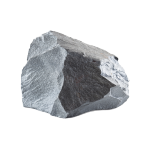
Iron Discovered 3500 BC
- Smartphone part(s)
- Microphone and Speakers
- Amount in smartphone
- 18.63g
- Projected Demand Increase (by 2030)
- 6%
- Found Primarily
- 1. Australia, 2. Brazil, 3. Russia
- Identified as a Clean Energy Metal?
- No
- Fun Fact
- Iron is the most critical metal to industrialization and transformation of human livelihoods and wellbeing on planet Earth.
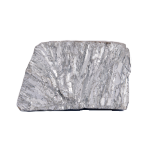
Zinc Discovered 1746
- Smartphone part(s)
- Circuit Boards
- Amount in smartphone
- 0.69g
- Projected Demand Increase (by 2030)
- 17%
- Found Primarily
- 1. Australia, 2. China, 3. Russia
- Identified as a Clean Energy Metal?
- Yes
- Fun Fact
- Zinc is used to coat iron, to prevent corrosion through galvanization. 16% of global steel output is galvanized; however, 60% of zinc demand is galvanization.

Terbium Discovered 1843
- Smartphone part(s)
- Vibration unit, Liquid crystal display
- Amount in smartphone
- Not Available
- Projected Demand Increase (by 2030)
- 195%-434% depending on stated policy or sustainable development goals
- Found Primarily
- 1. China, 2. Vietnam, 3. Brazil & Russia
- Identified as a Clean Energy Metal?
- Yes – for battery and wind
- Fun Fact
- Rare earth metals are a key component of the green energy transition helping to support magnets, wind turbines, and electric vehicles.
A smartphone’s battery is one the most important features of the phone and manufacturer’s are always looking to increase battery life for users. Nickel, Lithium, and Cobalt are prized metals for development of smartphone batteries with a long battery life.
Click each element to find out more.
Nickel Discovered 1715
- Smartphone part(s)
- Microphone, Battery, Casing, Electrical Connections
- Amount in smartphone
- 2.72g
- Projected Demand Increase (by 2030)
- 31%
- Found Primarily
- 1. Australia & Indonesia, 2. Brazil, 3. Russia
- Identified as a Clean Energy Metal?
- Yes
- Fun Fact
- Nickel supplies four critical demand sources: stainless steel, electroplating, superalloys and now batteries. Stainless steel has grown at 2x GDP since 1950 alone.
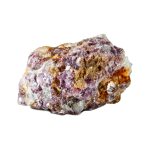
Lithium Discovered 1817
- Smartphone part(s)
- Battery
- Amount in smartphone
- 0.87g
- Projected Demand Increase (by 2030)
- 486%
- Found Primarily
- 1. Chile, 2. Australia, 3. Argentina
- Identified as a Clean Energy Metal?
- Yes
- Fun Fact
- The consumption of no metallic element has accelerated as fast as lithium. Perhaps it’s a good thing that it is the 33rd most abundant element in nature and is distributed widely in trace amounts in rocks, soils, and surface, ground, and sea waters.
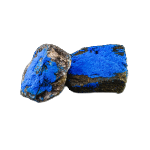
Cobalt Discovered 1739
- Smartphone part(s)
- Battery
- Amount in smartphone
- 6.59g
- Projected Demand Increase (by 2030)
- 29%
- Found Primarily
- 1. Congo, 2. Australia, 3. Indonesia
- Identified as a Clean Energy Metal?
- Yes
- Fun Fact
- Cobalt is critical to the superalloy, battery, catalyst, and electronics industry for its unique properties.

Manganese Discovered 1774
- Smartphone part(s)
- Battery
- Amount in smartphone
- 0.65g
- Projected Demand Increase (by 2030)
- 416%
- Found Primarily
- 1. South Africa, 2. Australia & Brazil, 3. Ukraine
- Identified as a Clean Energy Metal?
- Yes
- Fun Fact
- Manganese sulfate is also used in fertilizers and ceramics.
A smartphone’s microphone and speakers are typically located at the top and bottom of a phone and are improving with each new model. The minerals used to create smartphone microphones and speakers are typically Nickel, Iron, Praseodymium and Gadolinium.
Click each element to find out more.
Iron Discovered 3500 BC
- Smartphone part(s)
- Microphone and Speakers
- Amount in smartphone
- 18.63g
- Projected Demand Increase (by 2030)
- 6%
- Found Primarily
- 1. Australia, 2. Brazil, 3. Russia
- Identified as a Clean Energy Metal?
- No
- Fun Fact
- Iron is the most critical metal to industrialization and transformation of human livelihoods and wellbeing on planet Earth.

Nickel Discovered 1715
- Smartphone part(s)
- Microphone, Battery, Casing, Electrical Connections
- Amount in smartphone
- 2.72g
- Projected Demand Increase (by 2030)
- 31%
- Found Primarily
- 1. Australia & Indonesia, 2. Brazil, 3. Russia
- Identified as a Clean Energy Metal?
- Yes
- Fun Fact
- Nickel supplies four critical demand sources: stainless steel, electroplating, superalloys and now batteries. Stainless steel has grown at 2x GDP since 1950 alone.

Praseodymium Discovered 1885
- Smartphone part(s)
- Speaker & Microphone, Liquid crystal display
- Amount in smartphone
- Not Available
- Projected Demand Increase (by 2030)
- 195%-434% depending on stated policy or sustainable development goals
- Found Primarily
- 1. China, 2. Vietnam, 3. Brazil & Russia
- Identified as a Clean Energy Metal?
- Yes – for battery and wind
- Fun Fact
- Rare earth metals are a key component of the green energy transition helping to support magnets, wind turbines, and electric vehicles.

Gadolinium Discovered 1880
- Smartphone part(s)
- Speaker & Microphone, Liquid crystal display
- Amount in smartphone
- Not Available
- Projected Demand Increase (by 2030)
- 195%-434% depending on stated policy or sustainable development goals
- Found Primarily
- 1. China, 2. Vietnam, 3. Brazil & Russia
- Identified as a Clean Energy Metal?
- Yes – for battery and wind
- Fun Fact
- Rare earth metals are a key component of the green energy transition helping to support magnets, wind turbines, and electric vehicles.
Source of Data
- Opening data: IDC.com, Worldwide Smartphone Usage, 2021
- Year Discovered: The Royal Society of Chemistry (rsc.org)
- Smartphone Part(s): Visual Capitalist https://elements.visualcapitalist.com/critical-metals-in-a-smartphone/, CompoundChem.com https://www.compoundchem.com/
- Amount in Smartphone: 911Metallurgist.com
- Projected Demand Increase: RCF Proprietary Analysis, The International Atomic Energy Agency (www.iaea.org), AME, Roskill, USGS Mineral Commodity Summaries 2022, ITA, BNEF, CRU, and Macquarie. Note that ranges for rare earth metals are dependent on stated policy or sustainable development goals.
- Found Primarily: US Geological Survey, Mineral Commodity Summaries, 2022 https://pubs.usgs.gov/periodicals/mcs2022/mcs2022.pdf. Note Manganese used as proxy for Manganese Sulfate Reserves. Silicon data is unavailable (the reserves in most major producing countries are ample in relation to demand). Data reflects reserves.
- Identified as a Clean Energy Metal: The International Atomic Energy Agency (www.iaea.org)
- Fun Facts: Vishay Intertechnology https://www.vishay.com/docs/48397/_infographic_ms7551-1804-tantalum-automotive-grade-smd.pdf, World Stainless Association https://www.worldstainless.org/files/issf/non-image-files/PDF/Stainless_Steel_in_Figures_2022_public_English.pdf, The American Geosciences Institute https://www.earthmagazine.org/article/mineral-resource-month-gallium/, https://www.earthmagazine.org/article/mineral-resource-month-tin/, HKEX https://www.hkex.com.hk/-/media/HKEX-Market/News/Research-Reports/HKEx-Research-Papers/2020/LME_LMEmarkets_e_202007.pdf?la=en, McKinsey & Company https://www.mckinsey.com/industries/metals-and-mining/our-insights/lithium-mining-how-new-production-technologies-could-fuel-the-global-ev-revolution, Wikipedia https://en.wikipedia.org/wiki/Indium_tin_oxide, ThermoScientific https://www.ccdc.cam.ac.uk/Community/educationalresources/PeriodicTable/Molybdenum/, ScienceDirect.com https://www.sciencedirect.com/topics/medicine-and-dentistry/manganese-sulfate, RCF Analysis.
Important Information
This information should not be deemed to be a recommendation of any specific commodity, company, or security.
This material is provided for educational purposes only and should not be construed as research. The information presented is not a complete analysis of the commodities landscape. The opinions expressed may change as subsequent conditions vary. The information and opinions contained in this material are derived from proprietary and non-proprietary sources deemed by Resource Capital Funds and/or its affiliates (together, “RCF”) to be reliable. No representation is made that this information is accurate or complete. There is no guarantee that any forecasts made will come to pass. Reliance upon information in this material is at the sole discretion of the reader.
None of the information constitutes a recommendation by RCF, or an offer to sell, or a solicitation of any offer to buy or sell any securities, product or service. The information is not intended to provide investment advice. RCF does not guarantee the suitability or potential value of any particular investment. The information contained herein may not be relied upon by you in evaluating the merits of investing in any investment.
Investing involves risk, including possible loss of principal.
